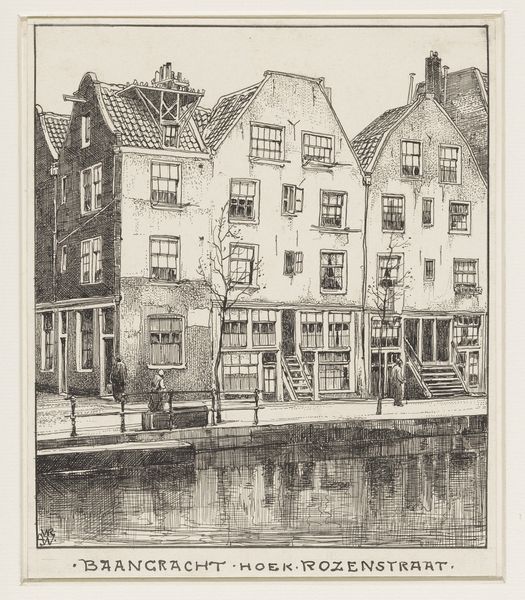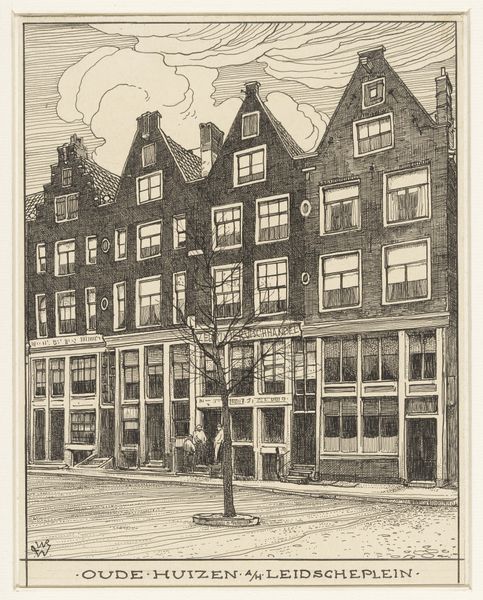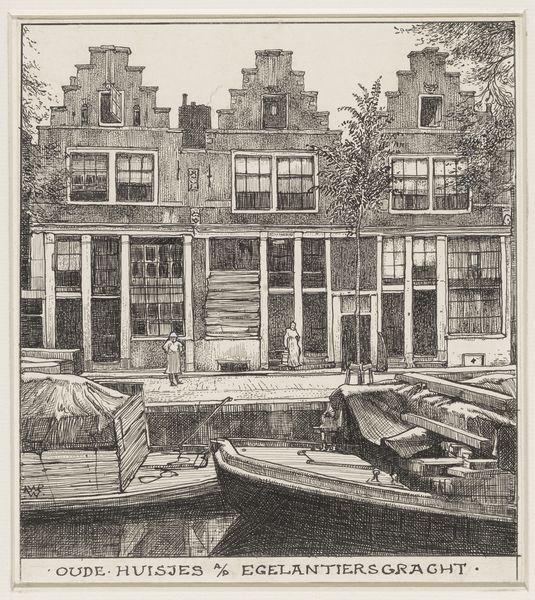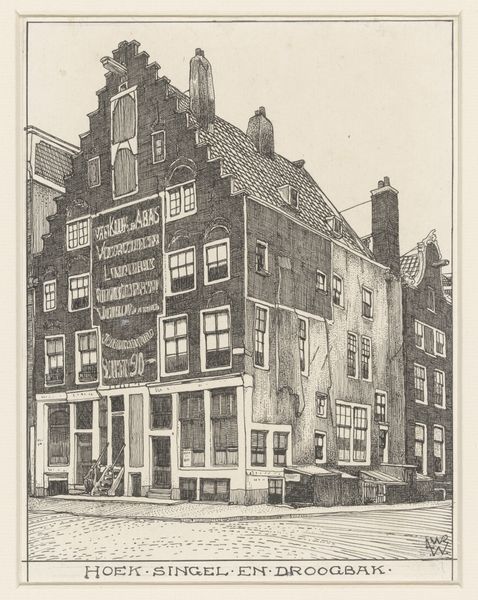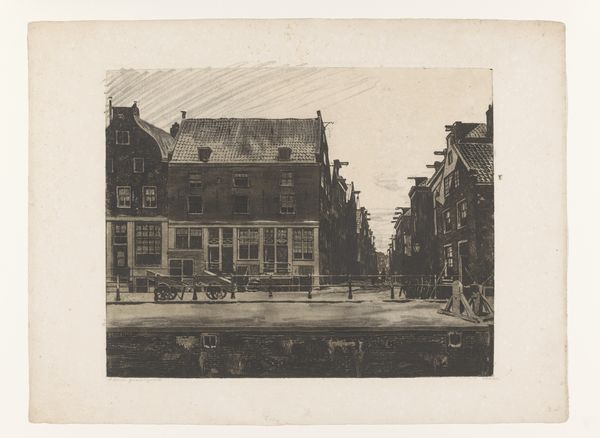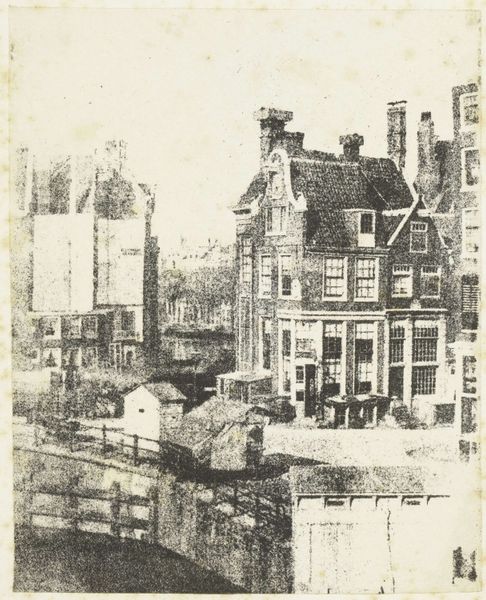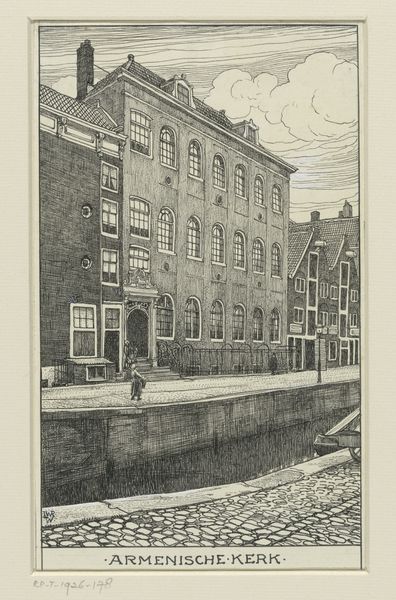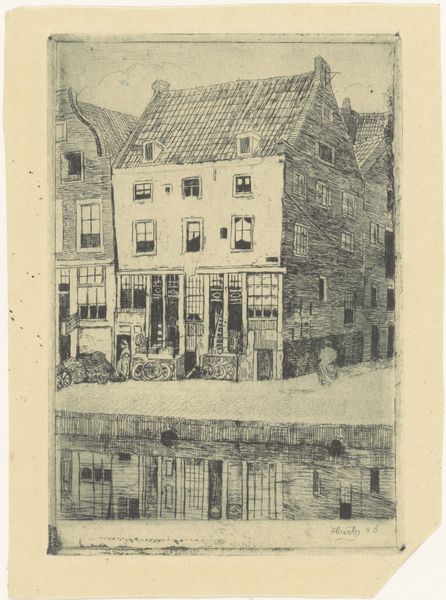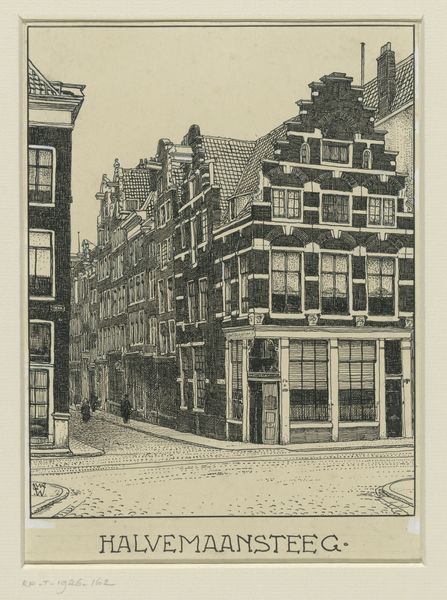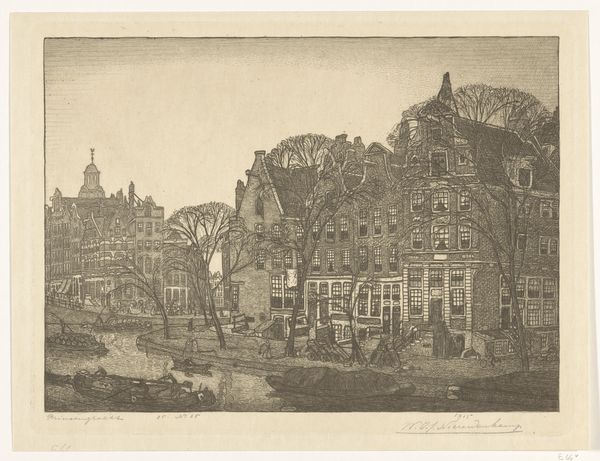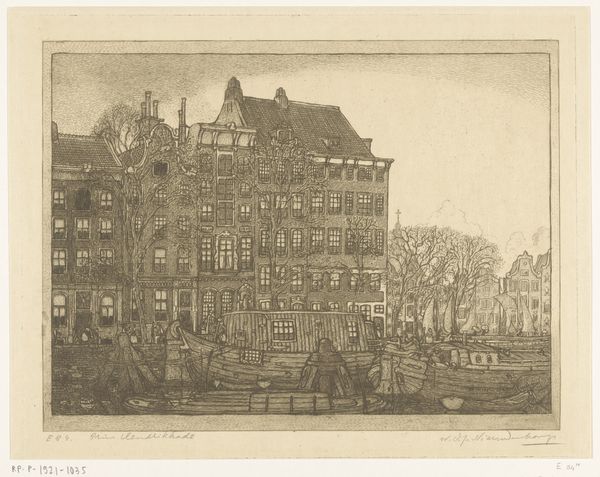
drawing, etching, ink
#
architectural sketch
#
drawing
#
aged paper
#
dutch-golden-age
#
mechanical pen drawing
#
etching
#
pencil sketch
#
old engraving style
#
sketch book
#
personal sketchbook
#
ink
#
sketchwork
#
pen-ink sketch
#
pen work
#
cityscape
#
realism
Dimensions: height 151 mm, width 176 mm
Copyright: Rijks Museum: Open Domain
Curator: "De Prinsengracht te Amsterdam, bij de Elandsstraat" is attributed to Willem Wenckebach, created sometime between 1870 and 1926. It's a captivating cityscape, rendered with ink on paper. Editor: It's remarkably precise; a delicate drawing, the kind you feel compelled to inspect up close. The muted tones and sharp lines almost give it a photographic quality, like an urban planning sketch. Curator: The Rijksmuseum houses this piece, offering viewers a window into Amsterdam's architectural and social fabric during a period of significant urban transformation. One can consider this through the lens of class structures evident in the building designs and the public's relationship to the city's waterways. Editor: Yes, and that detail in the reflections on the canal are masterful, but notice the use of line: it almost creates the texture of the brickwork and the ripples in the water. It evokes a sense of quiet labor; you imagine the artist meticulously crafting this image. Curator: Absolutely, that's critical! What do you think is the artist communicating about Amsterdam, specifically? Do you get a sense of social commentary, maybe of labor, embedded within this aestheticized cityscape? Or, more clearly, a social statement about Amsterdam? Editor: Perhaps less overt commentary and more documentary observation. Consider the aged paper, the deliberate marks of the pen... it points to a working process, almost a daily habit of observation translated directly from lived experience onto paper. Curator: I'd push back on that a bit and suggest the artwork allows us to reimagine how the narrative of the era's urbanization privileges certain demographics, reflected in how they might inhabit, control, and consume cityscapes. We could almost describe a dialogue between different classes here: working class, burgeoise, affluent business people who might control waterways or properties, if we stretch that point. Editor: Right, I understand. In contrast with idealized landscape painting, this artwork seems grounded in reality; we're seeing Amsterdam's constructedness—the human touch, the materiality, it presents that instead. The work involved and effort of capturing Amsterdam on the page mirrors the constant labor and bustle of a city in that time. Curator: Indeed. I think examining works like this forces us to consider how even seemingly neutral representations have embedded social narratives and historical power dynamics. Editor: Precisely! This drawing offers insight into the work of urban representation. It reminds us of the material reality beneath every image of Amsterdam we take in, then and now.
Comments
No comments
Be the first to comment and join the conversation on the ultimate creative platform.
